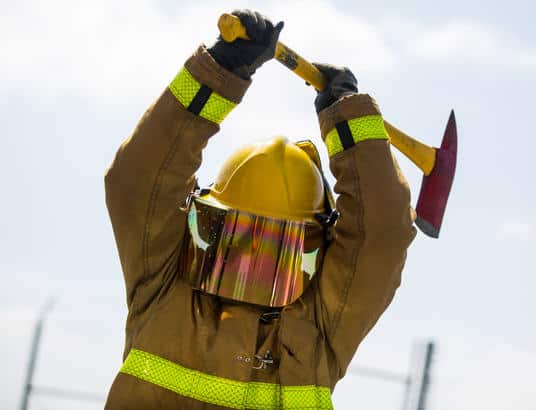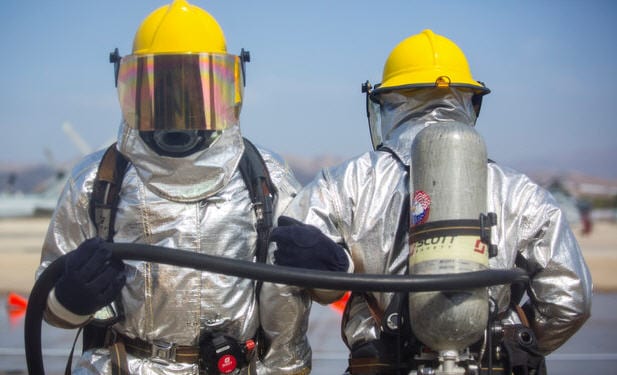
The mission of Aircraft Rescue and Firefighting Marines
By Cpl. Emmanuel Necoechea | Marine Corps Base Camp Pendleton | October 3, 2018
MARINE CORPS BASE CAMP PENDLETON, Calif. —
U.S. Marine Lance Cpl. Brandon Palmer, a hand-line specialist with Aircraft Rescue and Fire Fighting (ARFF), Headquarters and Headquarters Squadron, Marine Corps Air Station (MCAS) Camp Pendleton, suited up in the sweltering heat for yet another drill to simulate a downed aircraft. Palmer, along with his team, trains rigorously and often knowing that in a real-world situation, they have only seconds to save lives and or property. This is only a drill, but it prepares ARFF Marines to be ready for any situation requiring their response.
The MCAS Camp Pendleton ARFF supports airfield operations at forward-operating bases and installations with fire suppression and extinguishment, extrication and rescue, basic emergency medical services, salvage and overhaul operations and immediate hazardous material response.
“ARFF is one of the most important units supporting any airfield,” said Sgt. Timothy Paez, station captain assistant. ”We make pilots feel safe as well as any ground personnel who may encounter a medical mishap.”
During training drills, ARFF Marines are required to get into full gear, arrive at the scene, and respond to an incident within five minutes of the dispatch.
“We get different aircraft that we have to know how to approach that require different methods ranging from small, rotatory aircraft like the UH-1Y Venom to large, airframe aircraft like the C-130 Hercules,” said Staff Sgt. Kevin Harmon, ARFF Station Captain.
One type of drill ARFF Marines routinely conduct is called a hand-line drill. A hand-line drill is modeled to simulate a notional aircraft mishap that requires a hand-line specialist who is at the front manning the high-pressure water hose to suppress a fuel-leakage fire as other ARFF Marines reach any potential victims. During the drill, Marines set up cones to simulate an area of leaked fuel that requires suppression. Moving the cones with water trains the Marines on how to push forward safely.

Additional training includes breaking and cutting old metal lockers with a K12 fire rescue saw, jaws-of-life hydraulic cutters and fireman axes to simulate breaking into a downed aircraft to save personnel trapped inside.
“An ARFF Marine will go into an emergency with a tool in their hand. It will be used one way or another,” said Paez. “If not, they still have it in case a new situation pops up.”
“We protect the aircraft and the Marines on the air station,” said Harmon. “We do what we have to in order to keep people safe and prevent the damage or destruction to aircraft and buildings aboard the air station.”


















